How To Monetize A WordPress Blog (6 Practical Methods You Can Try)

Definitely one of the more common questions I receive is “how do I monetize my WordPress blog?”.
Many beginner bloggers get to the point where they set up their WordPress website, start publishing content and then are completely lost when it comes to monetizing it to earn extra income.
First, let me say that you must make sure that you are not starting a blog just for the sake of making money.
This is a sure fire way to fail and not generate a loyal following/readership.
On the other hand, if you are blogging to provide value instead of blogging strictly for income, then monetizing your website in certain ways can really pay off.
Of course as bloggers we want to earn some revenue from our efforts, but always be sure to put your readers first by answering questions, solving problems, providing solutions and producing high-quality content.
From there, the income will follow!
With that out of the way, let’s go over 6 practical methods on how to monetize a WordPress blog.
6 Methods for Monetizing Your WordPress Blog
A quick recommendation is to first focus on building up your blog a bit before you begin to monetize it heavily. Try to gain a little momentum first and generate a steady stream of traffic before trying the methods below. This way you will learn the foundational steps of content generation, search engine optimization, traffic generation etc., before you worry too much about earning an income. Once you gain more and more traction, these WordPress monetization strategies below will be a great way to get started.
1.) Build Your Email List
Any and every blogger should be building their email list. This is one of the best ways to monetize your WordPress blog as it offers a direct line of communication for those who opt-in to your list. You can simply place an opt-in form in your side widgets, at the top/bottom of your website, or trigger an exit pop-up whenever someone tries to leave your website (see screenshot below of my side widget email opt-in form). There are many WordPress plugins and tools to help you create attractive subscription forms. To entice people to subscribe to your email list, make sure you offer them something for free in return for their email address. This could be a free video training series, e-book, webinar, coaching call etc. Make this a valuable giveaway to have a better chance of people buying your paid products in the future, further along in your funnel. Build up the trust right from the start.
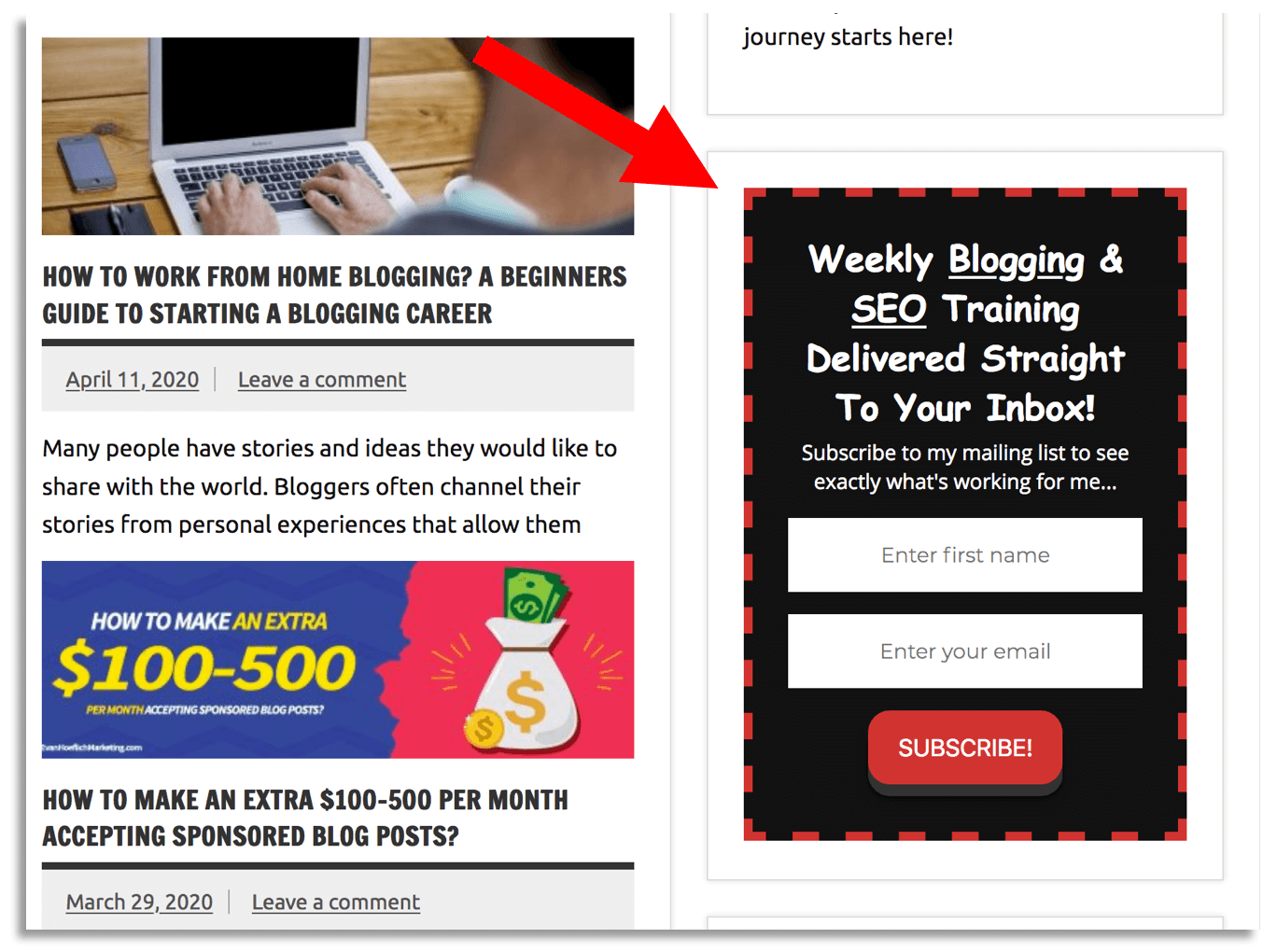
You’ll want to create an email follow-up series for your subscribers as well (7 days worth of automated emails or longer is recommended). A pretty good rule of thumb is to provide 80% informational/helpful emails and 20% that are promotional/sell your services or products. If you were to just sell to your subscribers in every email, they would quickly and easily hit the “unsubscribe” button and never return. Collecting email addresses and building a relationship with your email subscribers is one of the best ways a blogger can monetize their WordPress website. Eventually this can be an incredible way to earn income from your blog.
For bloggers, the email marketing software I highly recommend is ConverKit. They offer flexible pricing and also a free account for people to test out their services. You can also read my full ConvertKit review here to get more details!
2.) Affiliate Marketing (Recommend/Sell Products You Personally Use)
This has been a great monetization strategy for me personally and I would say one of the easier methods bloggers can try out for themselves. Affiliate marketing is actually how I made my first ever sale from my WordPress blog. I sold a simple web hosting package from HostGator and made $65!
Affiliate marketing is when you sell someone else’s product and earn a certain percentage of each commission. One of the simplest and most ethical ways to approach affiliate marketing is to recommend products to your visitors and email list that you personally use or have used in the past. Make sure these are high-quality products that you think would benefit the readers of your blog. For example, I have a dedicated page on my website “Recommended Tools” that shows people some of the services that I use to run my online business. This page contains affiliate links to these particular internet marketing tools and I’ve also added this page to my main navigation for increased visibility (see screenshot below).
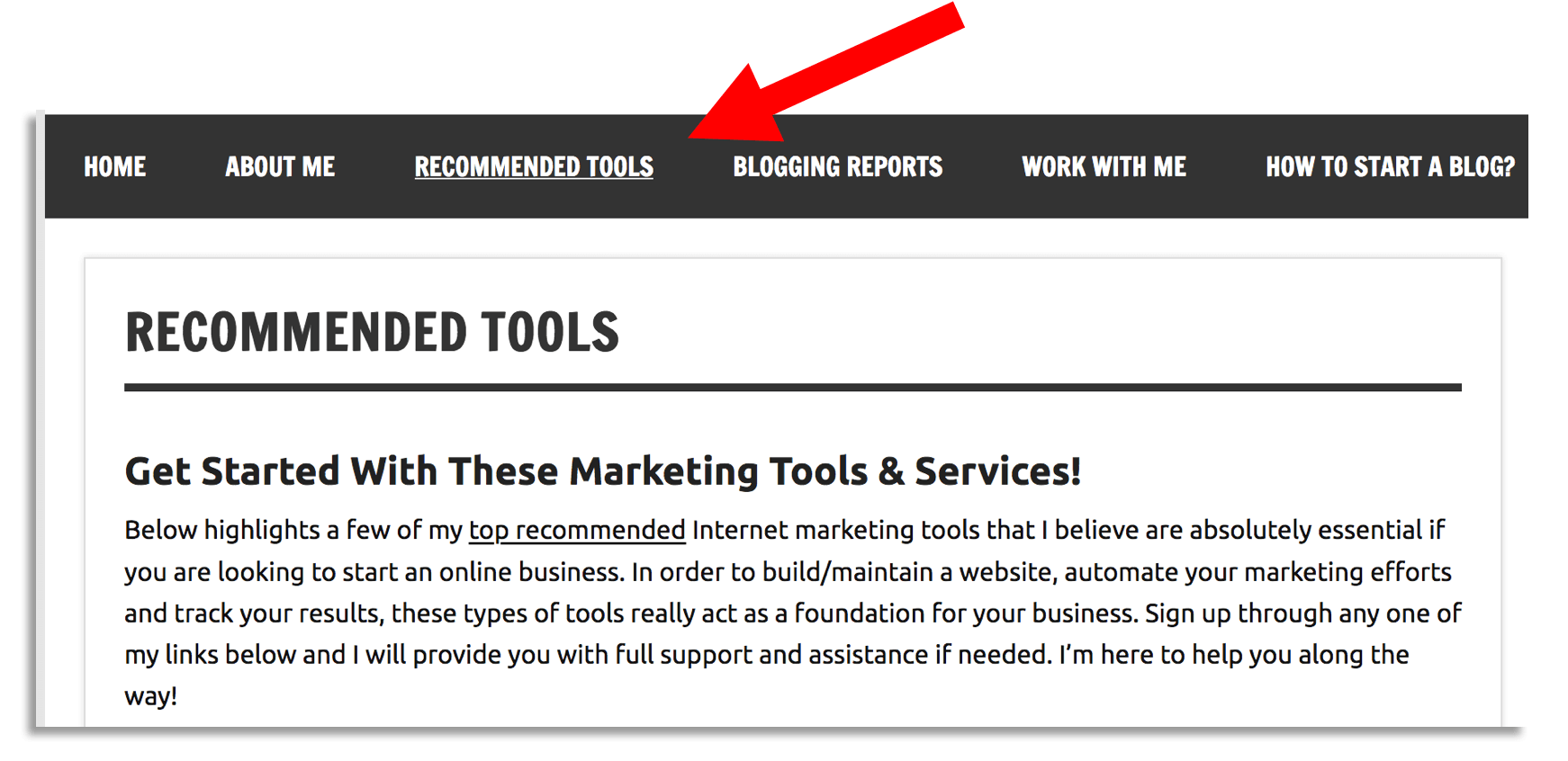
Another form of affiliate marketing you can try is writing product reviews on your website. So this would be individual blog posts crafted around a particular product you’ve tried. If you optimize these properly, they have a great chance of getting ranked highly on Google which can in return generate targeted traffic for the life of that post. You can review products you’ve both liked and disliked. For the blog posts of products you’ve disliked, you can recommend a better alternative product with your affiliate link at the end of the article. I see this method being used a lot. Just make sure you write these product reviews in moderation. You want most of your content to be valuable and informational. But by all means, every once in a while, throw a product review into the mix. This could really be helpful to people who are maybe on the fence about a particular product. There’s also a lot of monthly search volume for “review” type keywords, which makes this strategy very effective.
Examples: To see an example of a post that earns me affiliate commissions on autopilot, check this out. Also, I wanted to highlight one of my coaching students Chuck from CigarPals.com, who utilizes this method to create really high-quality cigar reviews, see here.
3.) Sell Your Own Products
Selling your own products can be a great way to earn an income from your WordPress blog. There are many different types of products a blogger can create and then sell. For example, I see bloggers selling e-books, video courses, webinar series, software, marketing tools, physical books, clothing, music, artwork, graphics and much more. What you sell as a blogger really depends on your type of website and the niche you operate in. The powerful thing about selling your own products is that 100% of the earnings are yours (unlike affiliate marketing). If you have a good product or product line that you’ve created, sky is truly the limit to how much you can earn from your website.
4.) Sell Coaching or Consulting Services
Selling coaching or consulting services can be a great monetization strategy for many bloggers. Even if you know just a little bit more about a particular topic than someone else, your information is valuable and can earn you an extra income stream. Now if you truly specialize in something, that’s where the big money can be earned. For me personally, my coaching/consulting is the biggest income generator for my website. It’s also the most predicable as people are constantly looking for additional help and support in a given area.
Once your blog starts generating more traffic, simply set up a designated page to explain your expertise and coaching program. Add a contact form and/or your email address so people can get in touch with you. I like to offer a free 30 minute phone call to both screen and incentivize potential clients. Again, it’s all about providing value upfront first before asking for payment. When gaining momentum with your coaching business, you may find that you have more clients and coaching inquiries that you can handle. This is actually a good problem to have as you can be selective with who you take on board and also charge premium pricing since your time is limited. Be sure to collect testimonials as you grow this part of your business and add them to your coaching page for more credibility. Some tools that have really helped grow my coaching business are Calendly (scheduling), Zoom (screensharing software), ConvertKit (email marketing software), Google Docs & Sheets (homework assignments and reporting) and Elementor (WordPress page builder).
Pro Coaching Tip: If you provide good coaching services to customers, you will be surprised at how many people start referring your services to others. When you get to this point, you can even pay the referrer a certain % of each sale. This is a win-win as current clients will earn money from referring others and you will continue growing your customer base. You can have an army of people marketing your coaching program just because you are providing top notch services. Talk about word of mouth!
5.) Accept Sponsored Blog Content
Another great way for bloggers to monetize their website is by accepting sponsored content. For this strategy, you will need to build up the authority of your blog a bit first and make sure you already have a sufficient amount of content on your website. This strategy is a win-win situation for all parties involved. The publisher gets fresh/unique content for their website and the guest contributor gets more exposure and a backlink to their blog.
The higher your domain authority is and the more traffic you have coming into your website, the more you can charge per sponsored posts. I’ve seen people charging anywhere from $25-$1,000 an article. This can really add up to an additional and consistent stream of income overtime, plus you’ll be getting fresh content to upload to your website. If you do decide to implement the sponsored content advertising strategy on your own WordPress blog, make sure you watch my video here first. Please leave me a “comment” and a “like” and let me know if you have any questions. It covers a lot of ground about sponsored content and provides great insight to get the most out of this particular tactic.
Pro Sponsored Content Tip: Only accept the highest quality content and spot-check any sponsored content submissions with a plagiarism tool such as CopyScape. You only want to publish 100% unique content that will be valuable and helpful to your readers. Duplicate content (that’s been published elsewhere) will do your website no good whatsoever.
6.) Banner Advertising
A simple and popular way to monetize your blog further is through banner advertising. You can either place your own banners on your website to personal and/or affiliate products OR you can sell that space for other companies to advertise their product(s). If you sell advertising space to other companies, you will need to be able to provide them with metrics of your website so they see the value in this. I personally like only using one banner ad on my website, that links to an affiliate product or one of my own products. The more banner ads you put on your website, the more it can tend to clog things up and take away from the content a bit. Make sure to not overdue this strategy and in my opinion, more is less here.
Wrapping Up
Now these are monetization strategies that I personally use on a regular basis, but of course there are additional methods you can try. I didn’t mention tactics such as Google Adsense, Creating Restricted Membership Content, Accepting Donations etc., for example, but know that the possibilities are endless when it comes to monetizing a WordPress blog. Adopt a monetization strategy that works for you and that is unique to your own blogging business. Something that works for one website, may not necessarily be the best method for yours. It’s best to get your feet wet and test the waters to see what yields the most results for your WordPress blog.
If you’re looking for additional help on how to monetize your WordPress blog, make sure to check out my blog coaching services here!
How are you currently monetizing your WordPress blog?







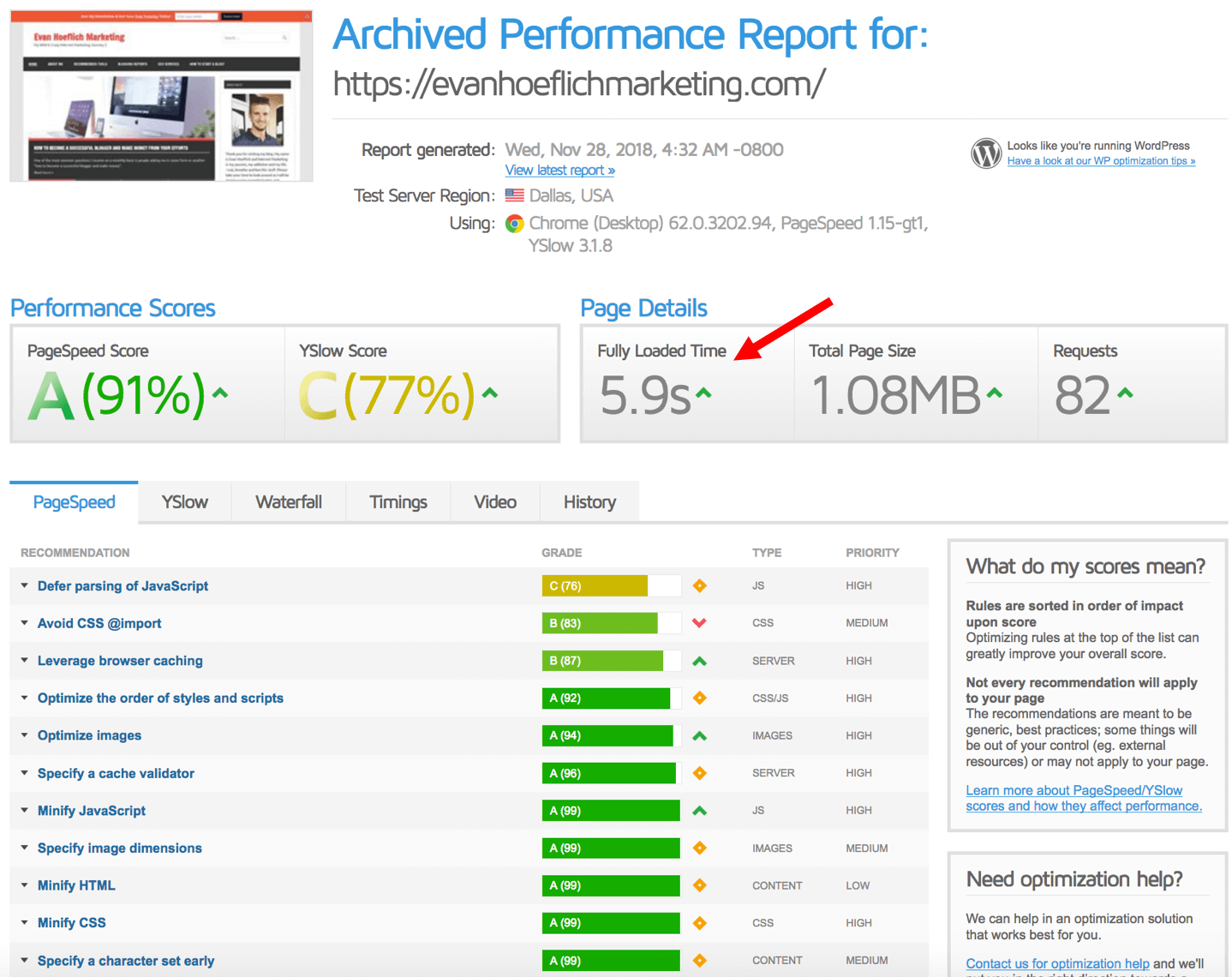
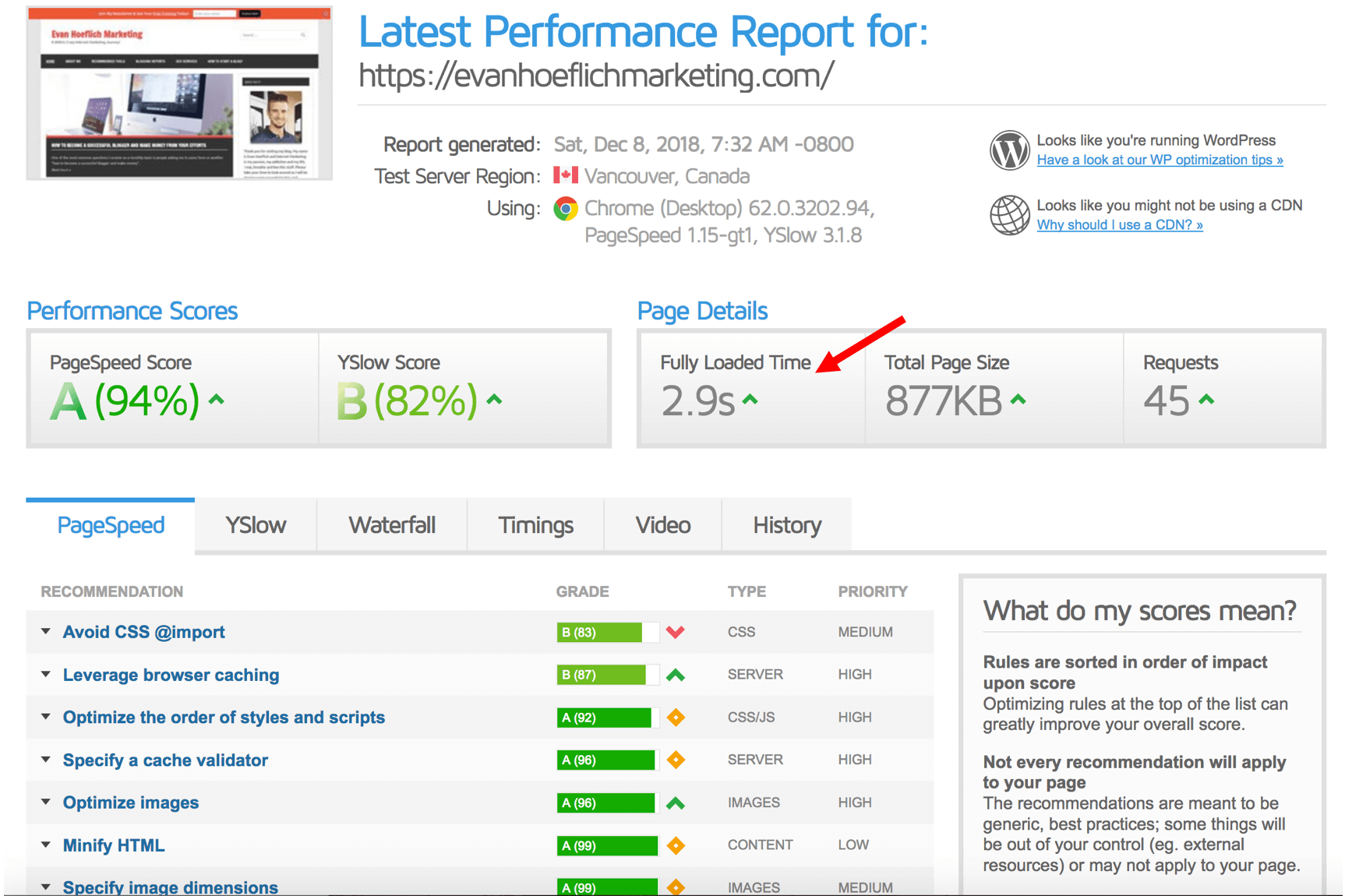


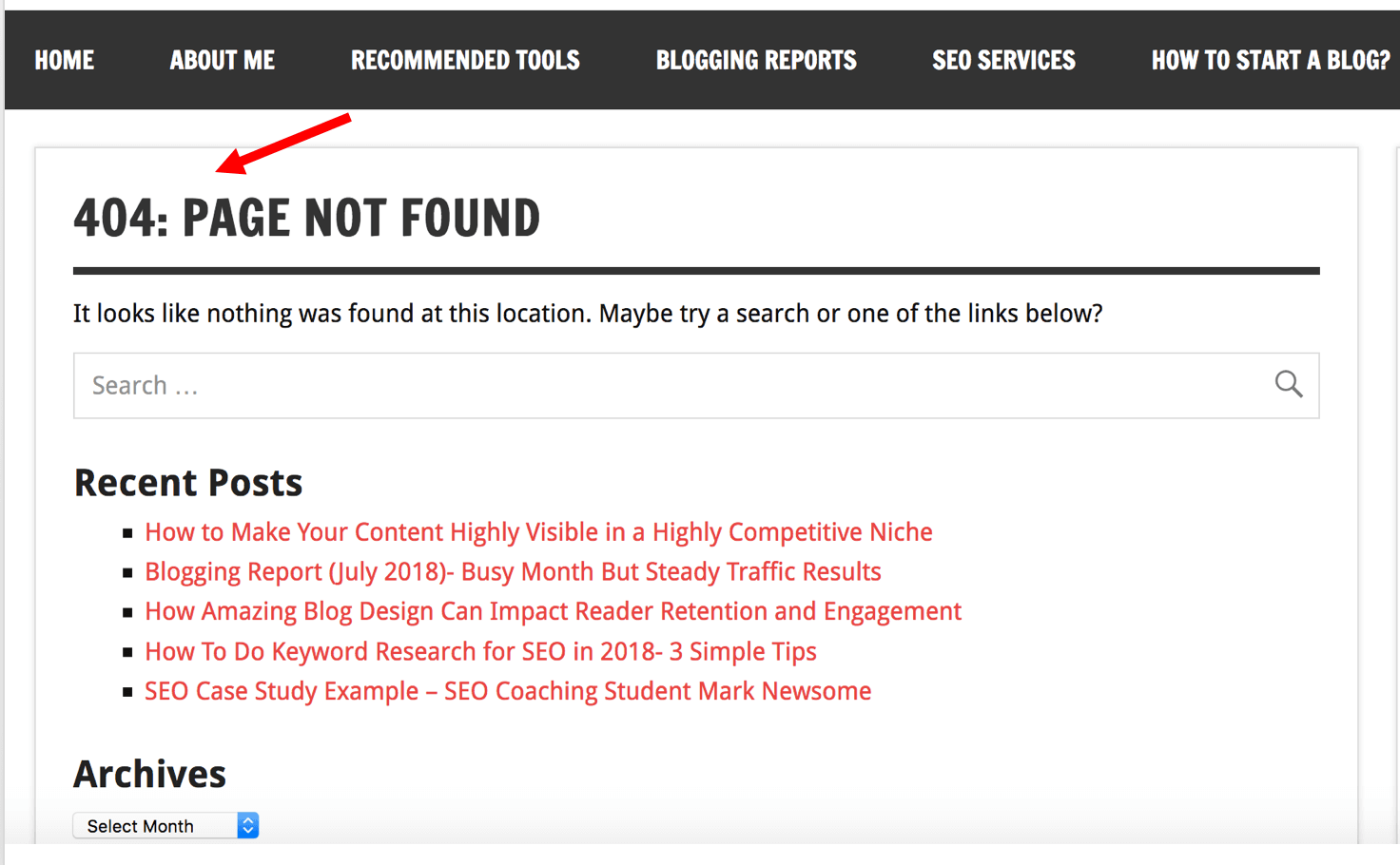





 determines the downtime of your website, and the speed in which your website loads.
determines the downtime of your website, and the speed in which your website loads. Jann is a Content Writer at
Jann is a Content Writer at 






